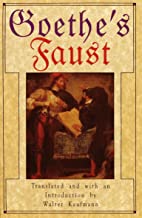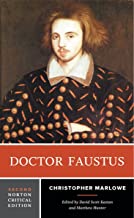Select a title from the menu.
The Faustbuch is about the closest-to-original printed story, printed in 1587. It was a lurid horror story with Christian morality, sold cheaply. The slightly older manuscript version is less preachy, and being hand written, was only for the wealthy.
Christopher Marlowe used an English translation of the Faustbuch to write The Tragical History of Doctor Faustus. His version is like the oldest – dark and medieval.
Johann von Goethe continued the tradition writing the two-part Faust in the early nineteenth century. Attitudes had changed since the sixteenth century, and his Faust transitions from the medieval to the Romantic.
Each version of Faust is an expression of the times. As the Western World evolved from the so-called Dark Ages to the Age of Enlightenment, the treatment of Faust changed. As each generation tells the story in its own way, they relate the attitudes of the times. Should Faust be damned or saved; resist temptation or succumb to the devil? Is he a hero or a villain? To the early reader of the Faust story it would be inconceivable that there might be other answers to those questions.
While no subsequent written works have quite the celebrity of Marlowe and Goethe, the Faust theme is now a classic one, retold under many names.


